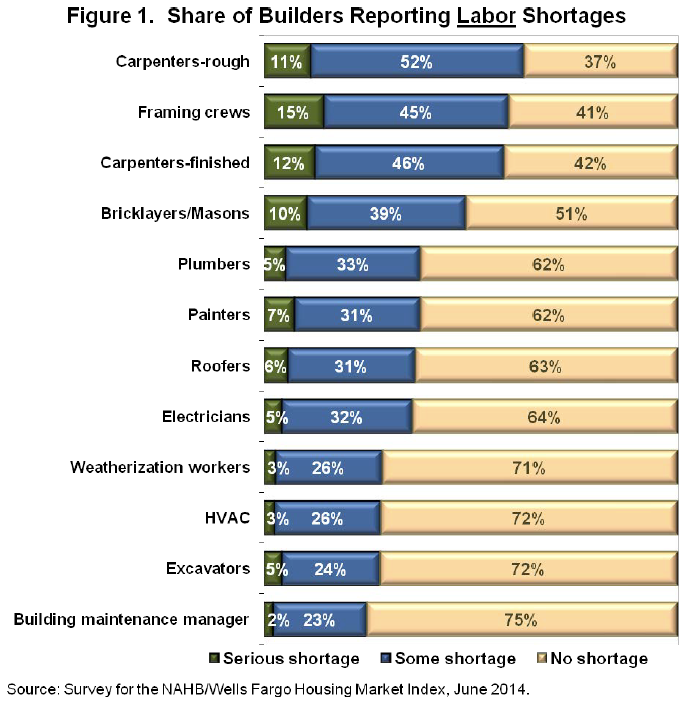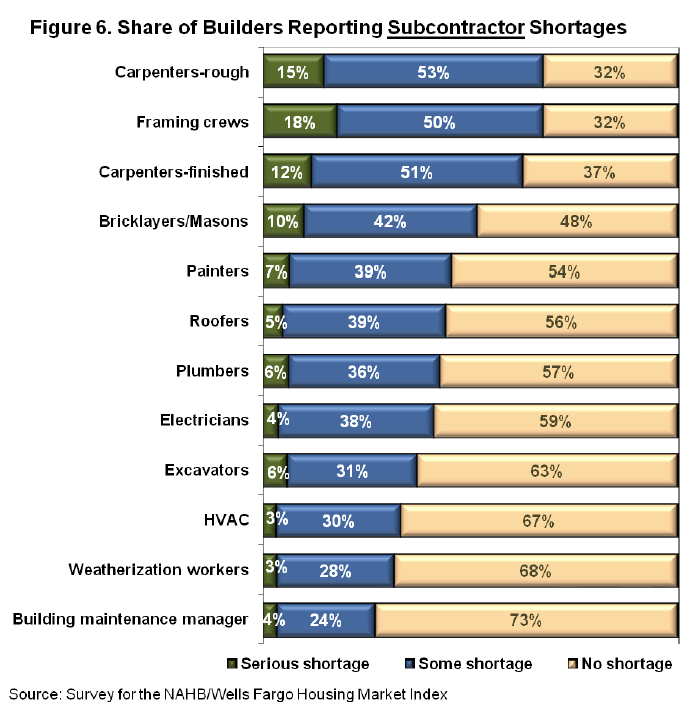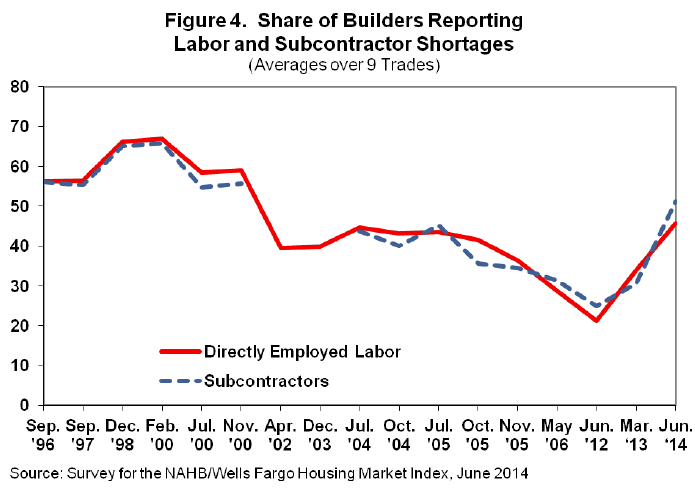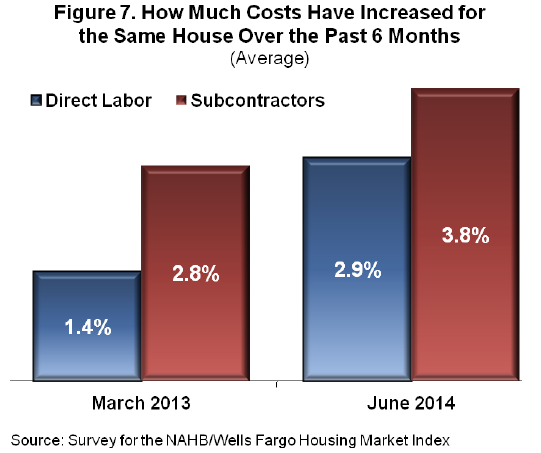Blog

Labor Shortages Adding to New Home Costs
Since the recession officially ended a lack of labor and materials hasrnblamed in part for the sluggishness of new home construction, at least by thernNational Association of Home Builders (NAHB). <bNow they have proof that not only are the labor shortages real but theyrnare growing.</p
NAHB conducted a survey of single-family home builders in June and foundrnthat shortages of labor and subcontractors, which they said were already quiternwidespread in mid-2014 have become even more acute, covering virtually everyrntrade. </p
The NAHB survey looked at 12 trades both in terms of workers directlyrnemployed by the home builder and as subcontractors – nine of these trades havernbeen covered in surveys dating back to 1996 (the exceptions are HVAC, weatherizationrnworkers and building maintenance manager.) The worst gaps are in the carpentryrntrade. Sixty-nine percent of builders surveyed reported at least some lack of arnlabor force of rough carpenters, with only 2 or 3 percentage points fewer reportingrnshortages of framing crews or finish carpenters. Bricklayers and Masons were also reported inrnshort supply as were electricians. </p
 </p
</p
The survey found thatrnbuilders were encountering even greater shortages of these same skills amongrnsubcontractors. A 2012 NAHB survey found that single family builders employ, onrnaverage, 25 different subs when building a home. Over half of builders contract out at leastrnthree quarter of the work and over 95 percent always contract out some. Among shortages of subcontractors carpentry againrnled the list; 74 percent reporting difficulty in hiring subs in the variousrnsub-categories of that trade – and a slightly higher percentage saying thernshortages were serious.</p
 </p
</p
In the case of both labor andrnsubcontractors the shortages were more widespread than reported last year. NAHB charted the shortages reportedrnthroughout the survey’s life averaged across the nine trades they havernconsistently tracked. The average fell to a low of 21 percent in 2012, rose torn46 percent in 2014 before hitting 52 percent this year. </p
NAHB points out that the highrnlevel of reported shortages is especially surprising given the current rate ofrnnew home construction which has not recovered from the housing crisis. The Census Bureau reported on Friday thatrnhousing starts were running at a seasonally adjusted rate of 1.2 millionrnunits, about half the 2004 and 2005 numbers but the nine-trade shortage isrnreportedly higher. The last time NAHBrnfound reports as high was just before 2001, “during a prolonged period ofrnstrong GDP growth with overall unemployment as low as 4.0 percent. </p
In general the labor andrnsubcontractor averages have been closely aligned but in 2013 a gap opened andrnthe shortage of subcontractors now runs 5 to 7 percentage points higher forrnsubs than for labor.</p
 </p
</p
These difference are also important because government statistics tend tornfocus on labor, to the extent that trends in subcontracting (where much of thernwork is done by the owners of small firms who are not technically counted asrnlabor) often go largely unreported.</p
NAHB believes one explanation for this gap is that construction workers whornlost jobs as the housing crisis grew may have started their own businesses butrnas employment opportunities have returned these small business owners may havernreturned to regular employment with home builders. This has increased the supply of labor whilernmaking the availability of subs slightly worse.</p
In any case, 66 percent of survey respondents reported the lack of availablernlabor and subs has caused them to pay higher wages or receive higher bids. Sixty-one percent reported this has led tornhigher home prices and 58 percent that it has made it difficult to completernprojects on time. Other effects include making some projects unprofitable, and forcingrnbuilders to turn down or delay work.</p
So, if costs have increased, by how much? rnStarting with its March 2014 survey NAHB started asking the degree ofrnincrease in labor and subcontractor costs for the same house compared to sixrnmonths earlier. On average the increasernwas reported as 2.9 percent for labor costs and 3.8 percent for subcontracting,rnboth up sharply from the first time the question was asked. Remember this is a six month increase. Extrapolated to 12 months labor wouldrnincrease 5.7 percent and subcontracting 7.7 percent at a time when the ConsumerrnPrice Index has risen roughly 2 percent.</p
 </p
</p
NAHB said that while the shortages are quite widespread, conditions vary</bacross the country. However they did not provide a geographic breakdownrnof the data.
All Content Copyright © 2003 – 2009 Brown House Media, Inc. All Rights Reserved.nReproduction in any form without permission of MortgageNewsDaily.com is prohibited.
Latest Articles
By John Gittelsohn August 24, 2020, 4:00 AM PDT Some of the largest real estate investors are walking away from Read More...
Late-Stage Delinquencies are SurgingAug 21 2020, 11:59AM Like the report from Black Knight earlier today, the second quarter National Delinquency Survey from the Read More...
Published by the Federal Reserve Bank of San FranciscoIt was recently published by the Federal Reserve Bank of San Francisco, which is about as official as you can Read More...

Comments
Leave a Comment